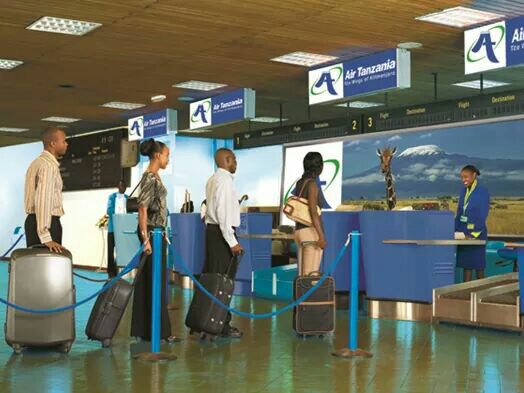Geza Ulole
JF-Expert Member
- Oct 31, 2009
- 59,219
- 79,506
ANALYSIS: How Ethiopian has come to the fore in Africa
13 November, 2017
- SOURCE: Flight Dashboard
- BY: Graham Dunn
- London
The fortunes of network-carrier rivals EgyptAir, Kenya Airways and South African Airways have in recent years faltered for a variety of reasons, while Africa's early adopters of the low-cost carrier model have struggled to make headway in its fragmented skies.
But since embarking on the 15-year plan in 2011, Ethiopian Airlines has charted a relatively stable path to establish itself as region's biggest carrier.
"When we planned [Vision] 2025, we were the fourth-biggest airline in Africa, behind SAA, EgyptAir and Kenya Airways. But now we are number one, by far," noted chief executive Tewolde Gebremariam during an interview with reporters in London on 8 November.
FlightGlobal schedules data for December 2010, the month prior to the start of Ethiopian's 15-year plan, shows EgyptAir and SAA as the biggest carriers in Africa by capacity. Ethiopian was vying for third spot, along with Kenya Airways and North African pair Air Algerie and Tunisair.
Figures for December 2017 show Ethiopian as the African carrier with the most capacity by any measure. Over the past seven years, the Star Alliance member has more than doubled capacity. By contrast, EgyptAir and mainline SAA are both smaller, in capacity terms, than at the start of the decade.
Gebremariam – who took the helm at Ethiopian in January 2011, when it embarked on the growth strategy – says the carrier is already exceeding goals it had set for the full term of the plan.
"In Vision 2025 we had goals for every year... and we have exceeded what we planned for after seven years. For instance, the number of international destinations planned for 2025 was 90, but right now we have passed 100. Same with cargo, with passenger; same with fleet. So I think it has been very robust growth, and profitable growth," he says.
The state-owned carrier has recorded a profit in every year of the plan so far - in contrast to many of its rivals in the region.
"Growth in the industry is often unprofitable," Gebremariam points out. "[Being] government-owned, we have no other way of raising money – we can't go to the stock exchange – so we have to make sure it's profitable."
The airline has been helped by the relative stability and economic growth in the country, albeit the poverty rate in the country remains relatively high, as well as its own clear mission.
Ethiopia's economy grew on average at just above 10% over the last decade – twice the rate of the region as a whole. By contrast, EgyptAir's growth was brought to a halt by the wider political changes in the country amid the Arab Spring, while SAA has remained plagued by boardroom and political intrigue.
"I think Vision 2025 has some contribution, because long-term planning is very important," says Gebremariam. But he adds: "The centre of confidence for us in Vision 2025 was the trade lane between China, Africa and Brazil... which is the fastest-growing trade lane in the world."
The carrier has expanded rapidly in China – a country which has invested heavily in Africa – adding Chengdu to its network last summer and looking at starting Shenzhen flights in 2018. It will also add Buenos Aires, Chicago and Geneva to its long-haul network next year.
Much of this expansion has been aided by the transformation of the fleet. "Getting the fleet right is a fundamental success factor," argues Gebremariam.
The airline, which was the first Boeing 787 operator in Africa and also operates Airbus A350s, has just taken delivery of its first 787-9.
Boeing
It already operates 19 Boeing 787-8s, alongside nine 777-200/300s, six A350-900s, 19 737-700/800s and 13 Bombardier Q400s, for passenger operations, Flight Fleets Analyzer shows. It also still operates six 767s, which will be phased out of passenger service, as well as eight freighters.
Gebremariam was speaking at a joint event with the Ethiopian Tourism Organisation in London, at which SkyTrax awarded a four-star rating to the airline. He highlights the challenges African carriers face in achieving consistent service levels, given the airport infrastructure challenges in parts of the continent.
"The ground infrastructure is not in control of the airline," he notes. "If you operate in London, Frankfurt, Singapore, there is a minimum standard of the airport by default. In Africa, particularly in some parts of sub-Saharan Africa, no matter how modern aircraft you have, or the product in the airplane, or how much you train your staff, you are unfortunately put down by the poor infrastructure there. So it means a lot to us."
Ethiopian's Vision 2025 strategy envisaged creating a full aviation group, and that in part has been to ensure the support is in place in areas such as MRO and human resources to match the airline's growth ambitions.
For example, the group has developed an aviation academy to provide pilots and technicians. "In Africa it is a challenge, with all the 'brain drain' – professionals leaving the continent," says Gebremariam. "Early on, we decided we will support the airline. We have invested $100 million over the last five years. Because of that investment, the largest in Africa, this enables us to grow as much as we can without a bottleneck of manpower shortage.
"The academy is a foundation of the airline, supporting its growth; otherwise it would not be possible to grow at 20-25% per annum."
There remain many challenges for Africa and its airlines, not least the continued strength of overseas carriers serving the continent and a lack of liberalised markets. But Ethiopian's growth and fleet modernisation has at least given it foundations to build from.
https://www.flightglobal.com/news/a...ethiopian-has-come-to-the-fore-in-afr-443108/
